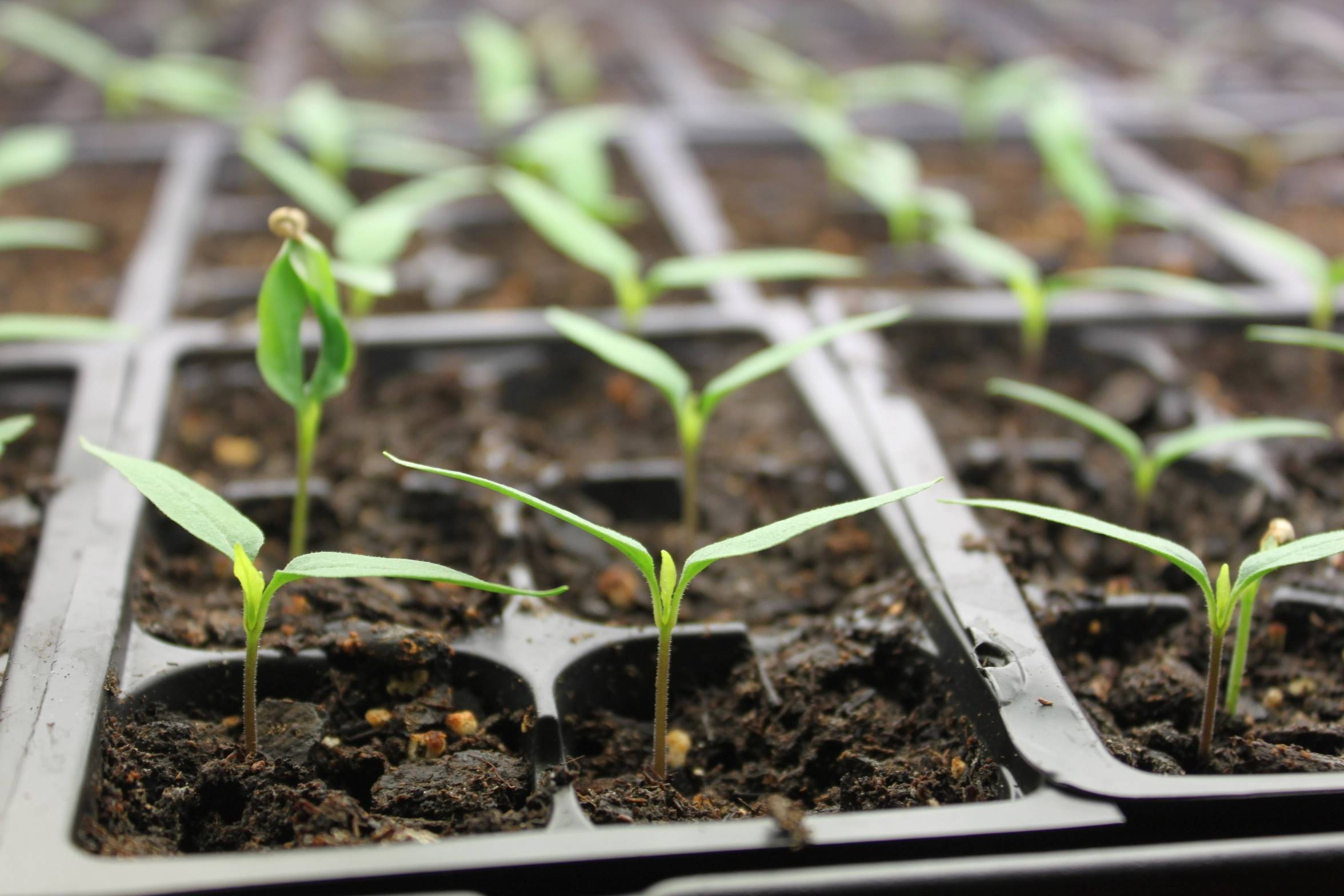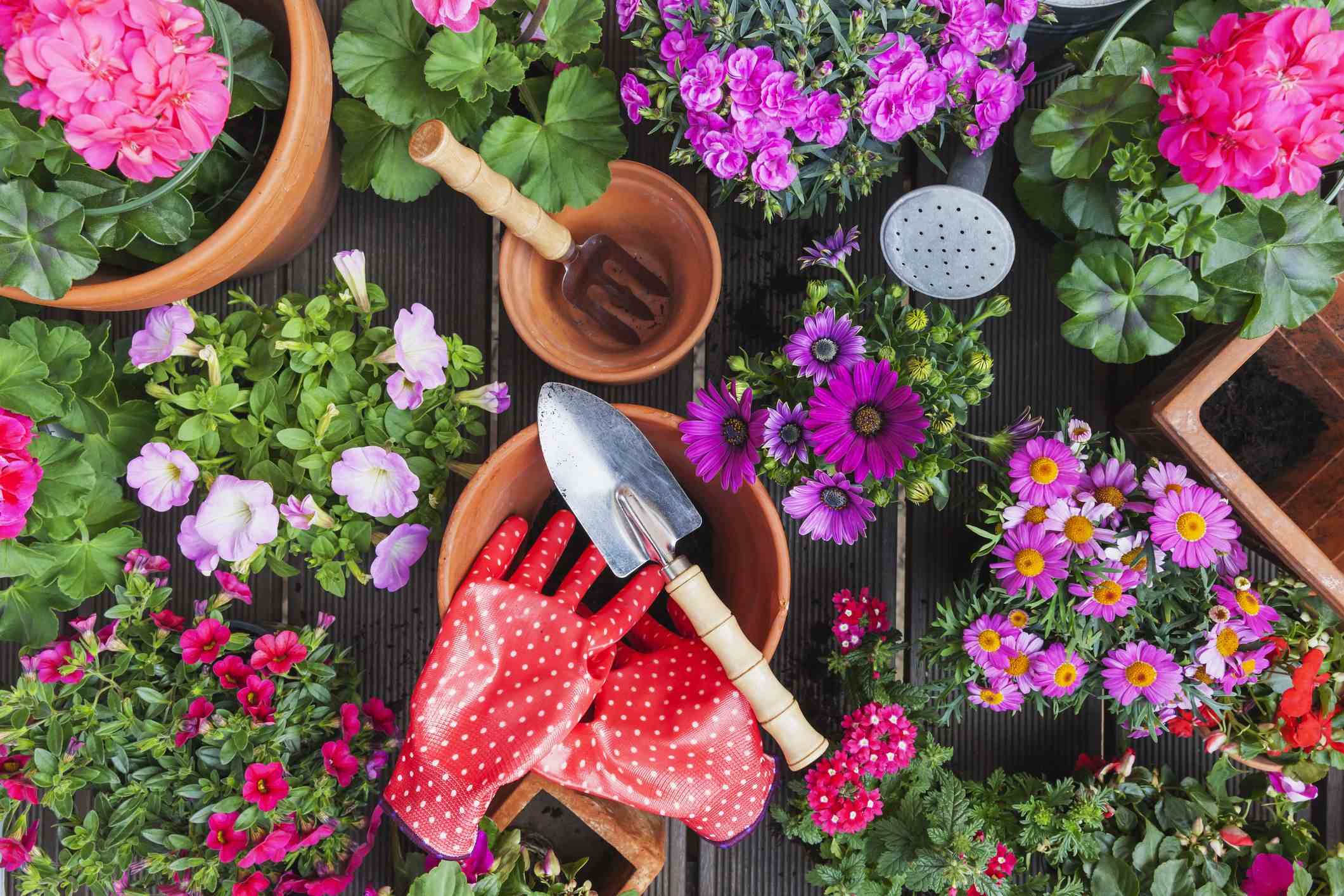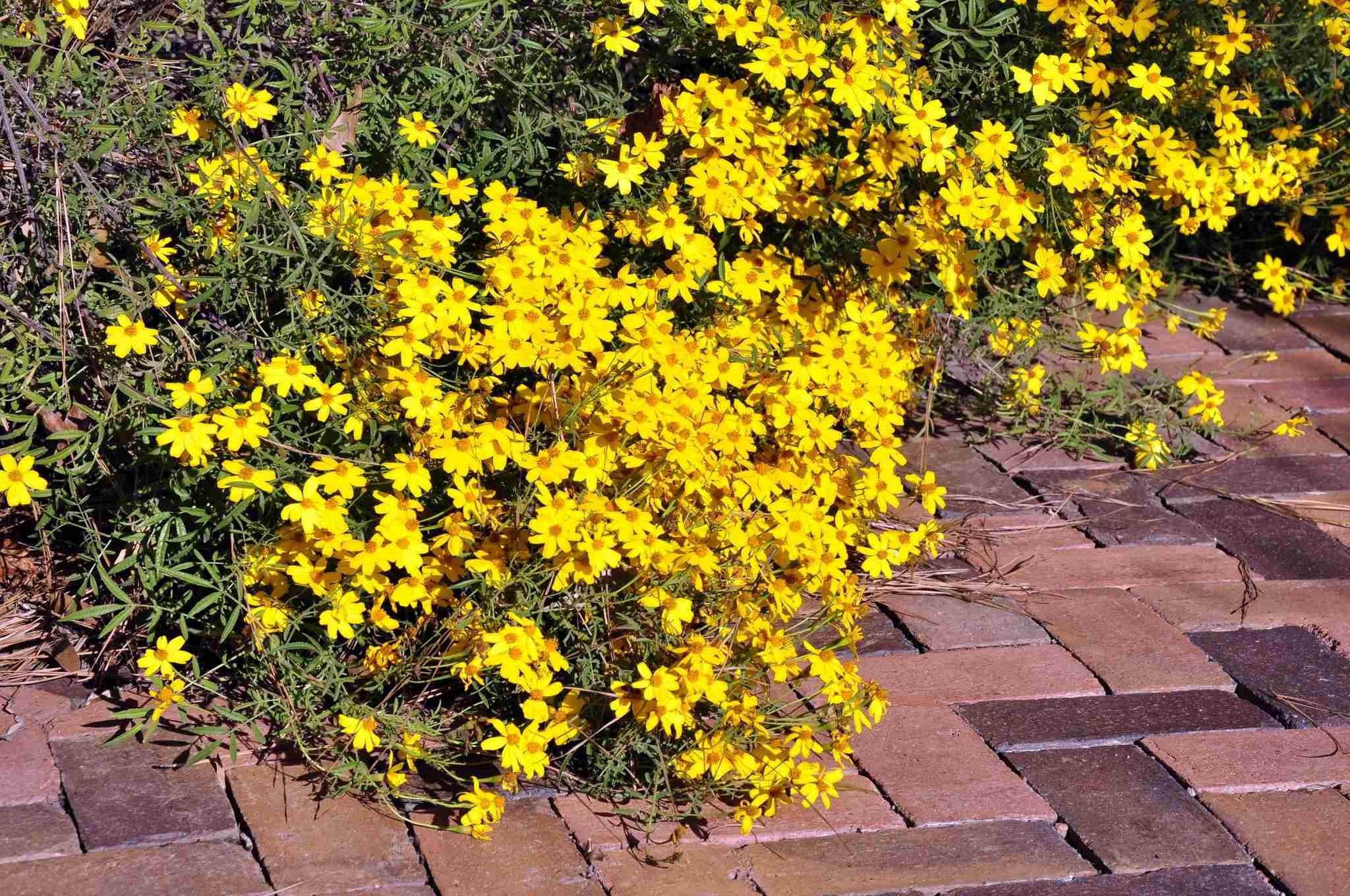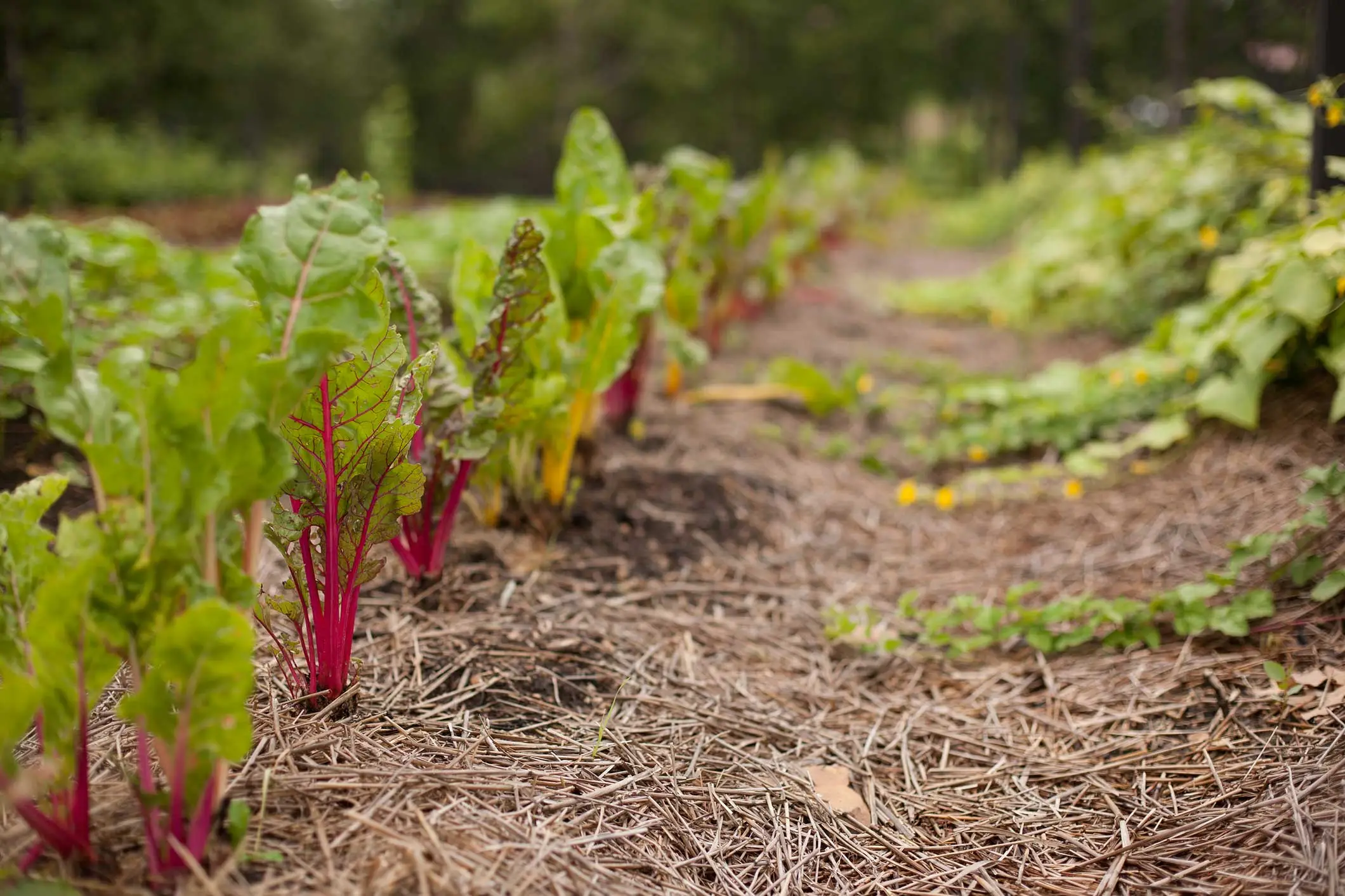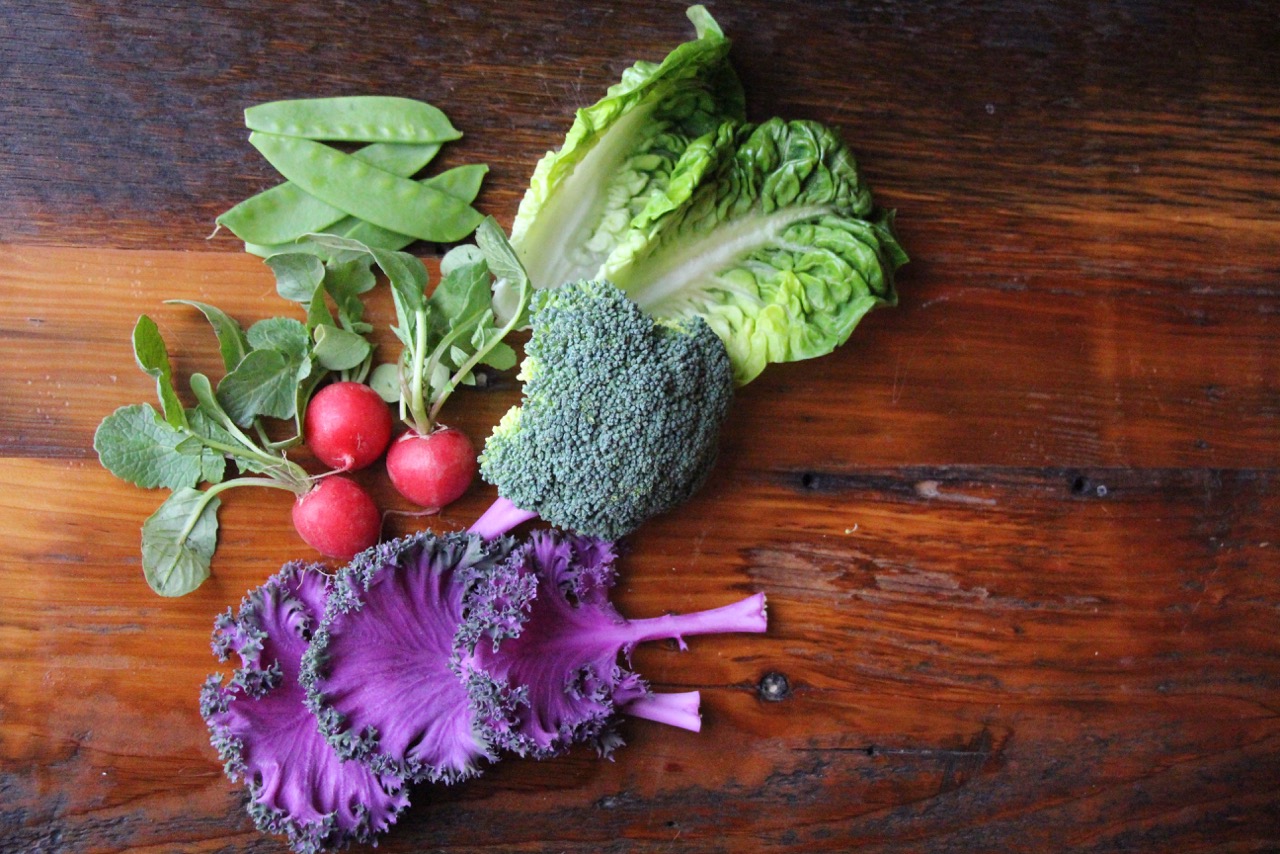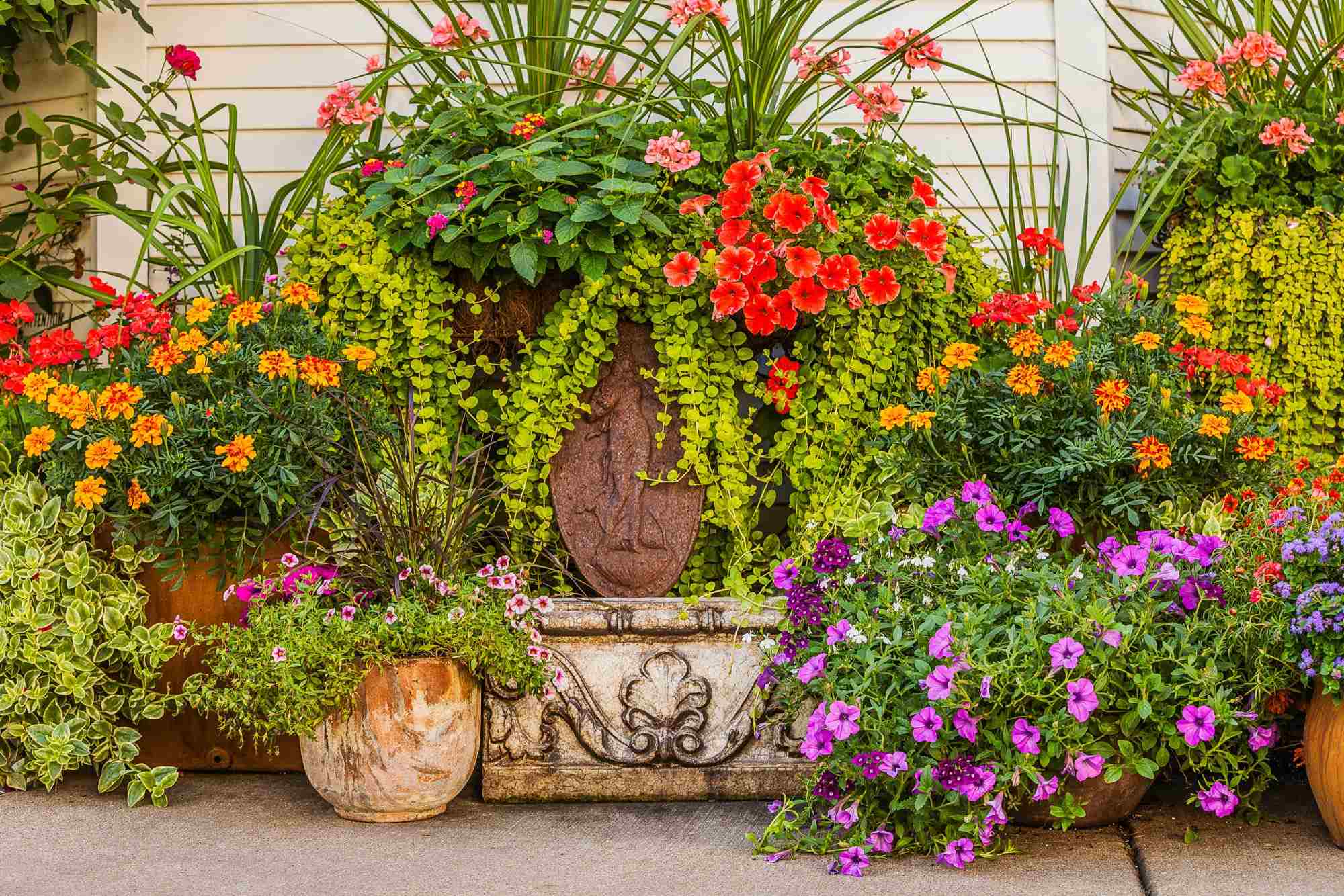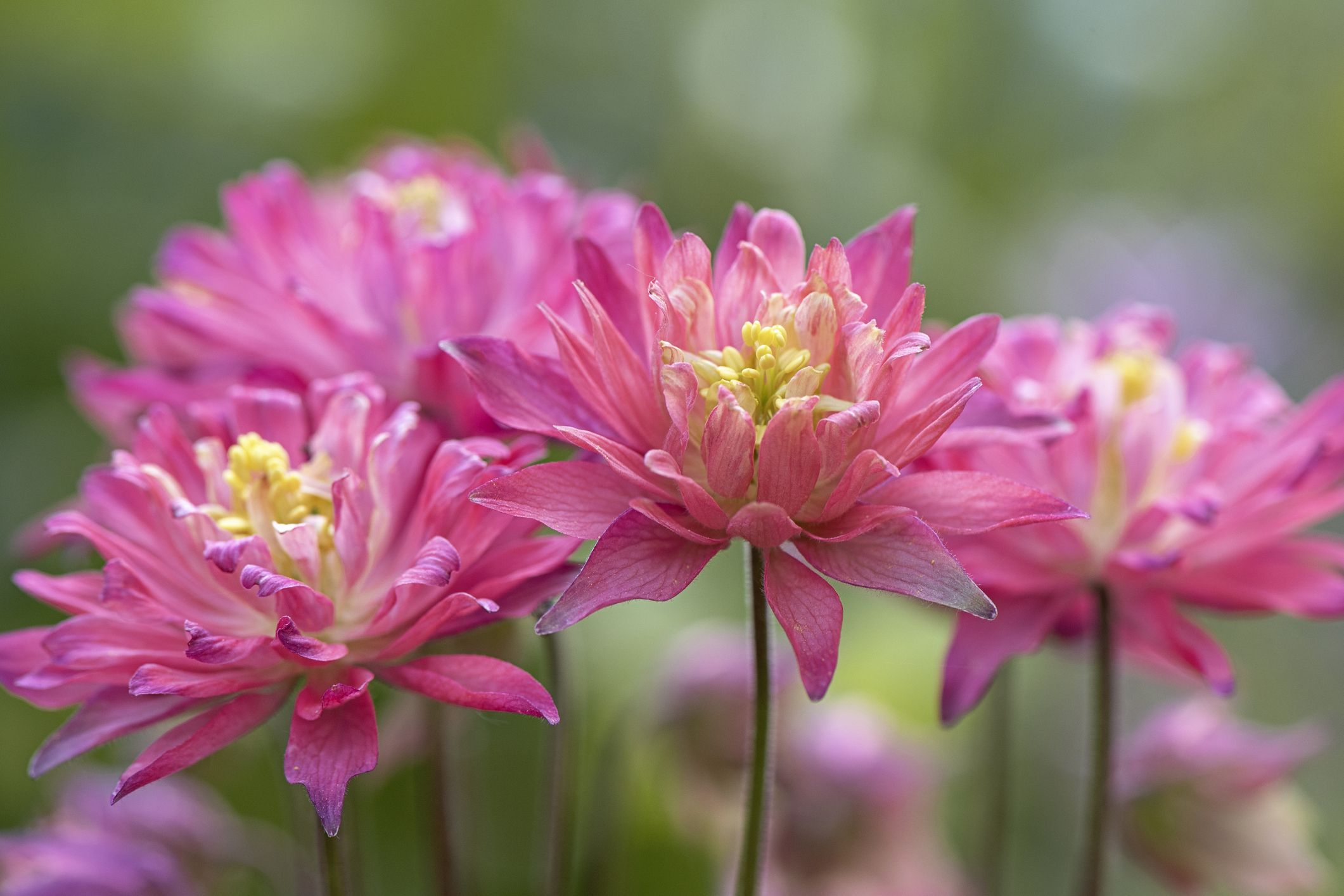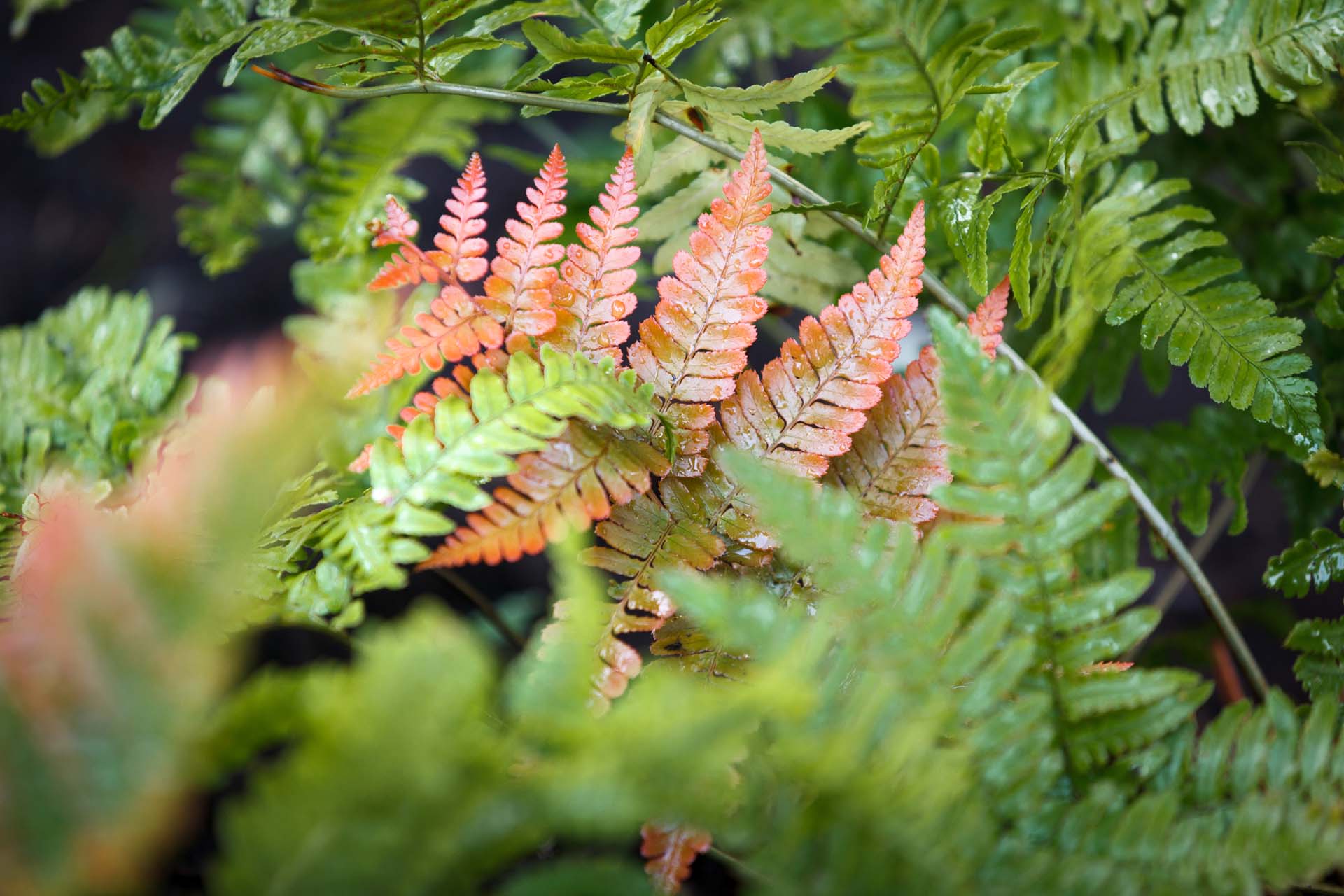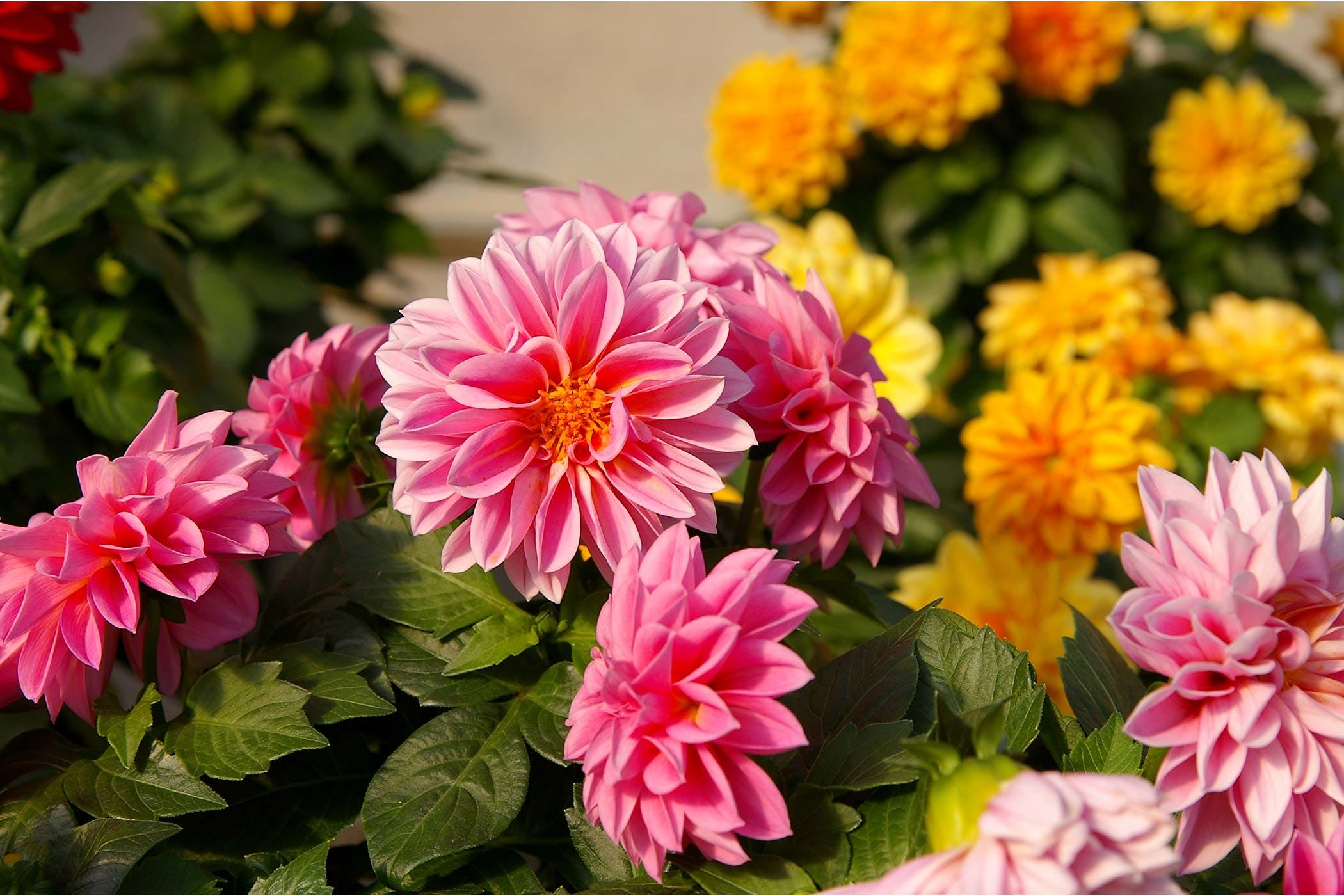Home>Types of Gardening>Ornamental Gardening>What Perennials To Plant In The Spring


Ornamental Gardening
What Perennials To Plant In The Spring
Modified: January 22, 2024
Discover the best ornamental gardening perennials to plant in the spring. Create a vibrant and colorful garden with our expert tips and recommendations.
(Many of the links in this article redirect to a specific reviewed product. Your purchase of these products through affiliate links helps to generate commission for Chicagolandgardening.com, at no extra cost. Learn more)
Table of Contents
Introduction
Welcome to the world of ornamental gardening! If you’re an avid gardener or someone who loves the beauty and serenity of a well-designed garden, then you’ve come to the right place. Ornamental gardening is all about creating visually appealing spaces with the use of plants and flowers. And when it comes to adding color, texture, and vibrancy to your garden, perennials are your best bet!
Perennials, unlike annuals which need to be replanted every year, are plants that have a lifespan of more than two years. They tend to come back year after year, making them a valuable addition to any garden. Springtime is the perfect season to introduce new perennials into your garden, as it allows them to establish their roots and thrive throughout the summer months.
But why should you choose to plant perennials in the spring? First and foremost, this is the time when the soil is starting to warm up, providing optimal conditions for root development. Planting in the spring allows the roots to establish themselves before the heat of summer arrives. Additionally, perennials planted in spring have a longer growing season ahead of them, enabling them to produce more blooms and foliage.
Another advantage of planting perennials in the spring is the wider availability of options. Nurseries and garden centers offer a plethora of choices during this time, allowing you to find the perfect plants that suit your garden’s style and color palette. From vibrant coneflowers to graceful peonies, there’s no shortage of options to create a stunning display.
Before you dive into planting perennials, it’s important to consider a few factors. Assess the sunlight, soil type, and drainage in your garden. Different perennials have different light and soil requirements, so choose plants that will thrive in your specific conditions. You should also take into account the mature size of the plants, ensuring that they will fit well in your garden without overcrowding. With these considerations in mind, you’ll be well-prepared to create a flourishing and beautiful ornamental garden.
In the sections to follow, we will explore the top ten perennials that are perfect for planting in the spring, as well as provide you with some helpful tips to ensure their successful growth and care. So, let’s get started on this delightful journey of creating a stunning and enduring garden!
The Benefits of Planting Perennials in the Spring
Springtime is an ideal season for planting perennials in your garden. The arrival of warmer temperatures and longer daylight hours creates the perfect conditions for these plants to thrive. Here are some of the key benefits of planting perennials in the spring:
- Establishment and Root Development: By planting perennials in the spring, you give them ample time to establish their root systems before the heat of summer arrives. This allows the plants to develop strong, healthy roots, which are essential for their long-term survival and growth.
- Extended Growing Season: Springtime offers a longer growing season, offering perennials plenty of time to establish themselves and produce abundant blooms and foliage. This allows you to enjoy their beauty for a more extended period of time.
- Availability and Variety: Nurseries and garden centers typically have a wide array of perennials available during the spring season. This gives you the opportunity to choose from a diverse selection of plants, ensuring you can find the perfect options to suit your garden’s aesthetic and color scheme.
- Flourishing and Thriving Plants: By starting with young, vigorous perennials in the spring, you give them the best chance to thrive. They are better equipped to adapt to their new environment and can establish themselves before facing any harsh weather conditions or environmental stressors.
- Low Maintenance: Once established, perennials are generally low maintenance compared to annuals. This means that after the initial planting and care, you can enjoy their beauty year after year without the need for replanting.
Planting perennials in the spring sets the stage for a vibrant and lively garden throughout the spring, summer, and even into the fall. With these numerous benefits, it’s no wonder that many gardeners choose to add perennial plants to their landscapes during this season.
Factors to Consider Before Planting
Before diving into the exciting process of planting perennials in your garden, it’s important to consider a few key factors. These considerations will help ensure that your perennials have the best chance of thriving and creating a beautiful and harmonious garden. Here are some factors to keep in mind:
- Light Requirements: Different perennials have varying light requirements, ranging from full sun to partial shade. Assess the amount of sunlight your garden receives throughout the day and choose plants that are well-suited to your garden’s light conditions.
- Soil Type and Drainage: Perennials have different soil preferences, so it’s crucial to understand your garden’s soil type and drainage characteristics. Some perennials thrive in well-draining soil, while others prefer moist soil. Adjusting your soil or selecting plants that are suited to your soil conditions will greatly enhance their chances of success.
- Growth Habit and Size: Consider the mature size and growth habit of the perennials you choose. Some plants spread rapidly, while others form clumps or grow vertically. Ensure that you have ample space for each plant to grow without overcrowding, and that their growth habits align with your desired garden aesthetic.
- Climate and Hardiness: Evaluate the hardiness of the perennials you plan to plant in relation to your local climate. Choose plants that are suitable for your region and can withstand the temperature extremes and weather conditions typical to your area.
- Complementary Plant Pairings: Consider the overall design and composition of your garden. Think about how the colors, textures, and forms of the perennials you choose will complement one another and create a visually appealing display. Plan for a variety of bloom times to ensure continuous color throughout the growing season.
- Watering and Maintenance: Assess the watering needs and maintenance requirements of the perennials you select. Some plants may require more frequent watering, while others are drought-tolerant. Similarly, consider the amount of time and effort you are willing to devote to the care of your garden and choose plants accordingly.
By taking these factors into consideration, you can make informed decisions when selecting and planting your perennials. This thoughtful planning will set the foundation for a successful and stunning garden that delights you for years to come.
Top Perennials to Plant in the Spring
Are you ready to add some excitement and beauty to your garden this spring? Here are ten stunning perennials that are perfect for planting during this season:
- Coneflowers: These vibrant and drought-tolerant flowers come in an array of colors, from pink to purple to white. They attract butterflies and bees, making them a valuable addition to any garden.
- Daylilies: Known for their stunning and showy flowers, daylilies are available in a wide range of colors. Their long blooming period and easy care make them a popular choice for beginner gardeners.
- Peonies: With their large, fragrant blooms, peonies are a classic favorite. They come in a variety of colors and add a touch of elegance to any garden.
- Black-eyed Susans: These cheerful, golden yellow flowers bloom throughout the summer and attract bees and butterflies. They are low-maintenance and add a pop of color to borders and beds.
- Russian Sage: This drought-tolerant perennial features silvery foliage and tall, lavender-blue flower spikes. It’s not only visually stunning but also attracts bees and butterflies to the garden.
- Hostas: Known for their unique leaf shapes and textures, hostas are a popular choice for shade gardens. They come in various sizes and colors and require minimal care.
- Salvia: The tall spikes of salvia blooms attract hummingbirds and butterflies to the garden. They come in a range of colors, including vibrant red, purple, and blue.
- Coreopsis: These cheerful daisy-like flowers bloom profusely and are available in a variety of colors. They are low-maintenance, drought-tolerant, and attract butterflies to the garden.
- Bleeding Hearts: These unique heart-shaped flowers dangle from arching stems and add a touch of whimsy to the garden. They prefer partial shade and moist, well-draining soil.
- Daisies: Simple yet charming, daisies are a classic addition to any garden. They come in various colors and sizes, and their cheerful blooms brighten up any space.
These perennials not only offer stunning beauty but also provide important habitat and food sources for pollinators. Incorporating these plants into your garden will create a vibrant and inviting environment while supporting the ecological balance.
Remember to choose perennials that are well-suited to your garden’s light and soil conditions, ensuring their successful growth and long-term enjoyment. Happy planting!
Coneflowers
Coneflowers, also known as Echinacea, are stunning and versatile perennials that deserve a spot in every garden. Native to North America, these hardy plants are not only beautiful but also attract butterflies and bees, making them an essential element in any pollinator-friendly garden.
One of the reasons why coneflowers are such a popular choice for spring planting is their ability to thrive in various soil types and light conditions. They prefer well-draining soil but can tolerate a wide range of soil pH levels. They are also relatively drought-tolerant once established, making them a low-maintenance option for gardeners.
One of the standout features of coneflowers is their vibrant and eye-catching flower heads. They come in a range of colors, including shades of pink, purple, yellow, and white. The distinctive central “cone” in the flower is surrounded by petals that radiate outwards, creating a beautiful and unique display.
Coneflowers are known for their long blooming period, typically starting in early summer and extending into fall. This extended blooming period means that your garden will be filled with color and vibrancy for months on end. Additionally, the dried seed heads of coneflowers provide visual interest in the winter and may attract birds to your garden.
When planting coneflowers, make sure to give them enough space to grow as they can reach a height of 2 to 5 feet and spread around 1 to 3 feet. They can be planted in full sun to partial shade, but they will produce more flowers in sunnier locations. Regular deadheading of faded flowers can encourage continuous blooming throughout the season.
Overall, coneflowers are a fantastic addition to any garden. Their stunning blooms, ability to attract pollinators, and adaptability to various conditions make them a versatile and rewarding choice for both novice and experienced gardeners.
Daylilies
Daylilies, also known by their scientific name Hemerocallis, are reliable and captivating perennials that are perfect for planting in the spring. These versatile plants are renowned for their stunning and abundant flowers, making them a popular choice for gardeners of all levels of experience.
One of the remarkable features of daylilies is their extensive range of flower colors and sizes. They come in a variety of shades, including vibrant yellows, rich oranges, soft pinks, and striking purples. Some varieties even showcase unique patterns and blends of colors, adding depth and interest to your garden. The flowers typically last for a day but are produced in abundance, creating an ever-changing and captivating display.
Daylilies are not only visually appealing but also easy to grow and maintain. They are adaptable to a wide range of soil types and can thrive in full sun to partial shade conditions. However, they tend to perform best in well-draining soil with a slightly acidic to neutral pH. Once established, daylilies are also drought-tolerant, reducing the need for frequent watering and making them a practical choice for busy gardeners.
Another advantage of daylilies is their long blooming period. Depending on the variety, they can bloom from spring to fall, providing continuous bursts of color in your garden. This extended blooming season ensures that your garden remains vibrant and engaging throughout the entire growing season.
Daylilies can also be used in various garden settings. They work well in borders, flower beds, or even as groundcover. Their grass-like foliage adds texture and structure to your garden, even when they are not in bloom. Additionally, daylilies are known for their ability to multiply and form large clumps over time, creating a dense and impressive display.
To care for daylilies, deadhead the faded flowers to promote continuous blooming and remove any spent foliage to keep the plants looking tidy. Divide the clumps every few years to prevent overcrowding and ensure healthier growth. With minimal maintenance, daylilies will reward you with years of stunning blooms and reliable beauty in your garden.
Whether you’re a seasoned gardener or just starting out, daylilies are a must-have perennial for spring planting. Their diverse colors, easy care, and long blooming period make them a standout choice that will bring joy and charm to any outdoor space.
Peonies
Peonies are timeless and enchanting perennials that are highly sought after for their stunning flowers and captivating fragrance. These exquisite blooms make peonies a beloved addition to any garden, and they are an absolute delight to plant in the spring.
Peonies are known for their large, showy, and fragrant flowers, which come in a range of colors including shades of pink, red, white, and even yellow. The flowers can be single, semi-double, or fully double, creating a variety of forms that add depth and visual interest to any garden. The lush blooms, often resembling fluffy clouds, are a sight to behold and are highly prized as cut flowers for bouquets and floral arrangements.
One of the advantages of peonies is their longevity. Once established, peony plants can live for decades, bringing beauty to your garden year after year. The flowers typically emerge in late spring and early summer, brightening up the landscape with their vibrant colors and intoxicating fragrance.
Peonies prefer a sunny location in your garden, although they can tolerate light shade. They require well-draining soil that is rich in organic matter. It’s essential to plant peonies at the proper depth, with the eyes (buds) of the plants just below soil level. When properly cared for, peonies can thrive and produce stunning blooms for many years to come.
Another benefit of peonies is their low maintenance nature. Once established, they require minimal care. Regular watering during dry periods, deadheading spent blossoms, and providing support for the heavy flowers are the main aspects of peony care. Dividing the clumps every few years can help rejuvenate the plants and promote healthier growth.
Peonies have a rich history and symbolism. They have been treasured in gardens for centuries and are considered a symbol of beauty, prosperity, and good fortune. They make striking focal points in flower beds, borders, or even as standalone specimens in the garden.
Whether you’re a seasoned gardener or a beginner, planting peonies in the spring allows you to witness the breathtaking beauty of their flowers and experience their delightful fragrance. These long-lived perennials will bring elegance and a touch of nostalgia to your garden, creating an enchanting atmosphere that you’ll never want to leave.
Black-eyed Susans
Black-eyed Susans, scientifically known as Rudbeckia, are cheerful and vibrant perennials that are a popular choice for spring planting. These delightful flowers not only add a pop of color to any garden but also attract bees and butterflies, making them a valuable addition to pollinator-friendly landscapes.
One of the standout features of black-eyed Susans is their striking golden yellow petals surrounding a dark brown or black central cone. These daisy-like flowers create a beautiful contrast and instantly brighten up any space. The flowers bloom from midsummer to early fall, ensuring a long-lasting and eye-catching display in your garden.
Another perk of black-eyed Susans is their adaptability to different soil and light conditions. They can thrive in a variety of soil types, from well-draining sandy soils to heavier clay soils. They prefer full sun but can also tolerate partial shade, although too much shade may result in fewer blooms. Their versatility makes them suitable for various garden settings, from borders and beds to meadow-like landscapes.
Black-eyed Susans are also low-maintenance plants, making them ideal for both experienced gardeners and beginners. Once established, they are relatively drought-tolerant and require minimal watering. Deadheading spent flowers can encourage continuous blooming and prolong their display throughout the season. In the fall or early spring, you can cut back the foliage to the ground to promote fresh growth.
These perennials are not only visually appealing but also provide an important food source for pollinators. Bees, butterflies, and other beneficial insects are attracted to the nectar and pollen-rich flowers, making black-eyed Susans an excellent choice for supporting biodiversity in your garden.
With a height ranging from 1 to 3 feet, black-eyed Susans are well-suited for mid to back borders or as filler plants. They can also be combined with other perennials and wildflowers to create a naturalistic and colorful display.
In summary, black-eyed Susans are stunning, easy-to-grow perennials that bring a burst of sunshine to any garden. Their vibrant blooms, adaptability, and ability to attract pollinators make them a delightful addition to your outdoor space. So why not add a touch of golden beauty to your garden with these charming flowers?
Russian Sage
Russian Sage, scientifically known as Perovskia atriplicifolia, is a show-stopping perennial that adds elegance and a touch of cool blue to any garden. This hardy and drought-tolerant plant is a popular choice for spring planting, known for its striking appearance and ability to attract bees, butterflies, and other pollinators.
One of the standout features of Russian Sage is its silvery-gray foliage, which adds texture and interest to the garden even when the plant is not in bloom. The aromatic leaves release a pleasant scent into the air when brushed against, adding an extra sensory element to your outdoor space.
The true beauty of Russian Sage, however, lies in its tall, wispy flower spikes adorned with small, tubular-shaped blue-purple flowers. These flowers create a delightful haze of color that lasts from midsummer into fall, making Russian Sage a standout plant in any garden landscape.
This perennial is a versatile addition to various garden styles. It works well as a border plant, in mass plantings, or as a focal point. Russian Sage also pairs beautifully with other perennials such as coneflowers, black-eyed Susans, and ornamental grasses, creating dynamic and visually pleasing plant combinations.
Russian Sage thrives in full sun, although it can tolerate some light shade. It prefers well-draining soil and is extremely drought-tolerant once established, making it an excellent choice for water-wise gardening. This low-maintenance plant requires minimal care, with occasional pruning in early spring to promote compact and bushy growth.
Aside from its stunning appearance, Russian Sage is a favorite among pollinators. Bees, butterflies, and hummingbirds are attracted to its nectar-rich flowers, providing a valuable food source for these beneficial creatures. By planting Russian Sage, you are not only enhancing the visual appeal of your garden but also supporting the local ecosystem.
With its unique appearance, hardiness, and pollinator-friendly nature, Russian Sage is an excellent choice for spring planting. Whether you’re looking to add variety to your garden or create a harmonious color scheme, this spectacular perennial will undoubtedly bring charm and grace to your outdoor oasis.
Hostas
Hostas are beloved and versatile perennials that are highly regarded for their stunning foliage and adaptability to various garden conditions. These shade-loving plants are perfect for spring planting, offering an array of leaf shapes, colors, and textures that can add beauty and elegance to any garden.
One of the main attractions of hostas is their diverse foliage. From large, broad leaves to slender, lance-shaped ones, hostas come in a range of sizes and forms. The foliage can be variegated, displaying combinations of green, blue, silver, or gold, or solid in color. The textures of the leaves can range from smooth and glossy to textured and ruffled, creating interesting visual and tactile interest.
Hostas thrive in shady or partially shaded areas of the garden, making them a popular choice for woodland gardens or underneath tall trees. While they prefer shaded conditions, there are hosta varieties that can tolerate more sun exposure, expanding the possibilities for incorporating these stunning plants into different garden settings.
Another advantage of hostas is their adaptability to different soil types. They prefer well-draining soil that retains moisture but can tolerate a wide range of pH levels. Ensuring a moist soil and regular watering will help maintain healthy growth and vibrant foliage.
Hostas are not only admired for their foliage but also for their attractive flowers. While the flowers may not be the main focal point of these plants, they add a touch of charm to the garden. Blooming in late spring to early summer, hosta flowers typically appear on tall stalks above the foliage. The flowers come in shades of white, lavender, or purple and can attract pollinators to the garden.
One of the reasons why hostas are beloved by gardeners is their low maintenance nature. They are relatively pest-resistant, although slugs and snails may occasionally be a concern. Regular watering, mulching around the plants, and dividing congested clumps in early spring or fall are the main aspects of hosta care.
Whether you’re looking to add texture, color, or foliage contrast to your garden, hostas are an excellent choice. Their adaptability, wide range of cultivars, and low maintenance requirements make them a go-to perennial for both beginner and experienced gardeners.
Salvia
Salvia, commonly known as sage, is a versatile and beautiful perennial that is perfect for spring planting. With its vibrant flowers and attractive foliage, salvia adds a burst of color and visual appeal to any garden. This drought-tolerant plant also attracts hummingbirds, bees, and butterflies, making it a valuable addition to pollinator-friendly landscapes.
One of the standout features of salvia is its long-lasting and showy flower spikes. The flowers come in a variety of colors, including vibrant red, purple, blue, and white. Some species even have bicolor or variegated blooms. The tall, upright spikes create a vertical element in the garden and add a sense of enchantment as they sway in the breeze.
Salvia is a sun-loving perennial and thrives in full sun to partial shade conditions. It prefers well-draining soil and is relatively drought-tolerant once established. This makes it an ideal choice for gardens with hot and dry climates or for those looking to conserve water. Regular watering during dry spells and mulching around the plants help maintain their health and vigor.
Aside from their stunning flowers, salvias also have aromatic foliage. The leaves are typically gray-green or green and have a distinct scent when touched or crushed. This feature adds an extra sensory element to your garden, providing a pleasant fragrance that can be enjoyed while you work or stroll through your outdoor space.
Salvia is loved not only for their beauty but also for their ability to attract pollinators. The nectar-rich flowers are a valuable food source for hummingbirds, bees, butterflies, and other beneficial insects. By planting salvias, you are not only enhancing the visual appeal of your garden but also providing essential resources for these important creatures.
Salvias are generally low-maintenance plants, making them a popular choice for gardeners. Deadheading spent flowers can encourage continuous blooming throughout the season, and pruning in early spring helps maintain compact growth. Dividing larger clumps every few years can rejuvenate the plants and promote healthier growth.
With their stunning flowers, aromatic foliage, and ability to attract pollinators, salvias are a fantastic addition to any garden. Whether you choose to plant them in borders, containers, or mixed perennial beds, salvias are sure to bring a touch of grace and charm to your outdoor sanctuary.
Coreopsis
Coreopsis, also known as tickseed, is a delightful and easy-to-grow perennial that is perfect for spring planting. With their cheerful daisy-like flowers and bright colors, coreopsis adds a vibrant touch to any garden. These low-maintenance plants are excellent choices for beginner gardeners and are loved for their extended blooming period.
One of the standout features of coreopsis is its profusion of vibrant blooms. The flowers come in a range of colors, including shades of yellow, gold, and pink. Some varieties even have bicolor or multicolored petals. The daisy-like blooms with their sunny colors are not only visually appealing but also attract butterflies, bees, and other pollinators to your garden.
Coreopsis is a sun-loving perennial and thrives in full sun to partial shade conditions. It prefers well-draining soil and is relatively drought-tolerant once established, making it a perfect choice for gardens with hot, dry climates. These plants are also adaptable to a variety of soil types, enhancing their versatility in various garden settings.
One of the remarkable qualities of coreopsis is its long blooming season. Depending on the variety, coreopsis can start blooming in early summer and continue into the fall, providing months of color and beauty in your garden. Regular deadheading of spent flowers can stimulate the growth of new blooms and prolong their display.
Not only are coreopsis flowers visually appealing, but they also add texture to the garden. The fine, fern-like foliage is delicate and airy, creating a contrast against other plants with broader foliage. The foliage remains attractive even when the flowers are not in bloom, adding interest to the landscape.
When it comes to maintenance, coreopsis is a low-maintenance plant. Minimal watering is required once the plants are established, thanks to their drought tolerance. Dividing the clumps every few years can help rejuvenate the plants and ensure healthier growth. With their resilience and adaptability, coreopsis is an easy and rewarding choice for any gardener.
With their vibrant flowers, extended blooming period, and ability to attract pollinators, coreopsis is a must-have perennial in your garden. Whether used in borders, rock gardens, or mixed beds, coreopsis adds a burst of color and charm to any landscape, creating a welcoming and lively environment.
Bleeding Hearts
Bleeding Hearts, scientifically known as Dicentra, are delicate and captivating perennials that bring a touch of whimsy and romance to any garden. With their unique heart-shaped flowers dangling gracefully from arching stems, Bleeding Hearts are a favorite choice for spring planting and are sure to steal your heart.
One of the standout features of Bleeding Hearts is their enchanting flowers. The blossoms hang in a cascade of delicate, heart-shaped petals, usually in shades of pink or white. This unique flower arrangement creates a charming and romantic display that adds an element of grace and intrigue to your garden.
Bleeding Hearts prefer partial shade and moist, well-draining soil to thrive. They are an excellent choice for shady areas where other plants may struggle. Their delicate foliage adds an elegant touch to the garden, with fern-like leaves that provide a beautiful backdrop to the dangling flowers.
The availability of different Bleeding Hearts cultivars provides options for varying heights, flower colors, and foliage. Some varieties have golden or chartreuse foliage, adding visual interest and creating lovely color contrasts in the garden. Choosing a mix of Bleeding Hearts cultivars can create a captivating garden display that is sure to delight.
Bleeding Hearts are relatively low maintenance, making them suitable for gardeners of all skill levels. Regular watering is essential to keep the soil consistently moist, especially during dry periods. Mulching around the plants helps retain moisture and suppress weed growth. Removing faded flowers can encourage continuous blooming and keep the plant looking tidy.
While Bleeding Hearts tend to go dormant in the summer, their foliage often regrows in the cooler months, creating an attractive ground cover. It’s important to leave the foliage untouched until it turns yellow and fades naturally, as this allows the plant to store energy for the next growing season.
Bleeding Hearts excel in shaded gardens, woodland gardens, or as border plants. They also work well in containers, where their unique flowers can be showcased up close. Whether used as a focal point or part of a broader floral arrangement, Bleeding Hearts bring a touch of romance and elegance to any outdoor space.
With their whimsical flowers and elegant foliage, Bleeding Hearts are a must-have perennial for gardeners who appreciate beauty and uniqueness. Planting Bleeding Hearts in the spring will ensure you have a garden filled with charm and enchantment for seasons to come.
Daisies
Daisies are timeless and cheerful perennials that radiate joy and simplicity in any garden. These beautiful and versatile flowers are a perfect choice for spring planting, adding a touch of charm and elegance to your outdoor space.
One of the standout features of daisies is their classic flower form. Their blooms consist of a vibrant center, called the disc, surrounded by delicate petals arranged in a ray-like fashion. This simple yet stunning flower structure makes daisies instantly recognizable and universally loved.
When it comes to color, daisies are diverse and abundant. From pure white to shades of pink, purple, and yellow, daisies offer an array of color options to suit any garden aesthetic. They also come in different sizes, from small and delicate to larger and more robust varieties.
Daisies are sun-loving perennials and thrive in full sun, although they can tolerate some light shade. They prefer well-draining soil but are relatively adaptable to various soil types. This versatility makes daisies an excellent choice for borders, rock gardens, or even as a standalone focal point in your garden.
These perennials are not only visually appealing, but they also attract butterflies and other pollinators to your garden. The nectar-rich flowers provide a valuable food source for these beneficial creatures, enhancing the biodiversity and ecological balance in your outdoor space.
In terms of care, daisies are relatively low-maintenance. They require regular watering, especially during dry spells, but can generally tolerate drought conditions once established. Deadheading spent flowers encourages continuous blooming and ensures a neat appearance. Dividing crowded clumps every few years can also help maintain their vigor and promote healthier growth.
Daisies are incredibly versatile and can be used in various garden styles. They work well in cottage gardens, meadows, or wildflower-inspired landscapes, adding a natural and carefree beauty to the surroundings. Daisies are also a popular choice for cut flower arrangements, allowing you to bring their vibrant beauty indoors.
With their timeless beauty, vibrant colors, and ability to attract pollinators, daisies are a must-have addition to any garden. These simple yet captivating flowers will bring a touch of joy and warmth to your outdoor space, creating a welcoming and vibrant atmosphere.
Tips for Successful Planting and Care
Planting and caring for perennials in the spring requires some attention to detail to ensure their successful growth and long-term health. Here are some essential tips to help you achieve a thriving and vibrant garden:
- Site Selection: Choose the right location for your perennials based on their specific light and soil requirements. Assess the amount of sunlight your garden receives and consider factors such as soil type, drainage, and moisture levels.
- Soil Preparation: Prepare the soil before planting by loosening it, removing weeds, and incorporating organic matter. This improves drainage, promotes healthy root development, and enriches the soil with essential nutrients.
- Proper Planting Technique: Dig a hole that is wide and deep enough to accommodate the root ball of the perennial. Place the plant in the hole at the same depth it was previously growing, ensuring that the crown is level with the soil surface.
- Watering: Proper watering is crucial for the establishment and growth of perennials. Water deeply after planting and continue to water regularly, especially during dry periods. Aim to keep the soil consistently moist but not soggy to prevent root rot.
- Mulching: Apply a layer of organic mulch around the base of the plants to help retain moisture, suppress weed growth, and moderate soil temperature. Mulching also adds a decorative element to your garden while providing a protective layer for the roots.
- Pruning: Regular pruning promotes healthy growth and encourages vigorous blooming. Prune faded flowers and remove dead or damaged foliage to maintain the plant’s appearance and prevent the spread of diseases.
- Fertilizing: Feed your perennials with a balanced fertilizer or organic amendments in the spring to provide essential nutrients. Follow the package instructions for application rates and frequencies, taking care not to over-fertilize, which can lead to excessive foliage growth at the expense of flowers.
- Dividing and Transplanting: Some perennials benefit from dividing every few years to prevent overcrowding and maintain their vigor. Spring is an ideal time for dividing and transplanting, allowing the plants to establish new roots before the stress of hot summer weather.
- Pest and Disease Control: Monitor your garden regularly for pests and diseases and take appropriate measures to control them. Identifying and addressing issues early can prevent the spread and damage to your plants.
- Winter Protection: Consider providing winter protection for your perennials, especially if you live in a region with harsh winters. Apply a layer of mulch, straw, or protective coverings to insulate the plants from extreme temperature fluctuations.
Remember that perennials may have specific care requirements, so it’s essential to research and understand the needs of each plant in your garden. With proper planting techniques, regular care, and attention to their unique needs, your perennials will reward you with years of beauty and enjoyment.
Conclusion
Planting perennials in the spring is a wonderful way to create a stunning and enduring garden that brings joy and beauty year after year. These hardy plants offer a wide array of colors, textures, and forms, allowing you to create a garden that reflects your personal style and preferences. From the vibrant coneflowers to the delicate Bleeding Hearts, each perennial brings its unique charm and adds a touch of elegance to any outdoor space.
Spring is an ideal time to plant perennials as the soil warms up, providing optimal conditions for root development. By selecting the right perennials for your garden and giving them proper care, they will establish themselves and thrive throughout the growing season, gracing you with abundant blooms and lush foliage.
Remember to consider factors such as sunlight, soil type, watering needs, and maintenance requirements when choosing and caring for your perennials. Each plant has its own preferences and requirements, and it’s important to accommodate them to ensure their successful growth.
Through proper planting techniques, regular watering, and maintenance, you can create a thriving and vibrant garden filled with perennials that bring beauty, fragrance, and joy. Additionally, by selecting plants that attract pollinators, you contribute to the sustainability and biodiversity of your ecosystem.
So, whether you’re an experienced gardener looking to expand your collection or a novice embarking on a new gardening journey, don’t hesitate to plant perennials in the spring. With their long-lasting beauty and ability to return year after year, these plants will become the backbone of your ornamental garden, providing you with endless enjoyment and satisfaction. Happy planting!
